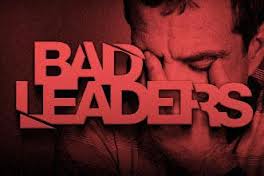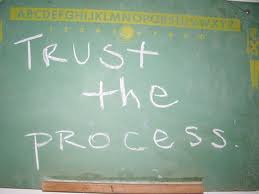
Several months ago I was on a Skype call with a friend of mine who is a priest living in the mountains of Bolivia. He’s working with some of the poorest people in South America. He wanted my advice on how to raise $250,000 over the next five years to support the projects he’s working on.
Before I could get a word out he said, “Jeff, I’m thinking all we need to do is have one big event back in the States. I’ll invite everyone I know, have them invite their friends and I’ll make a pitch for the money. What do you think?”
To his dismay, I said, “I think that’s a terrible idea. Do you know how much time and work events are and, even more importantly, how much they cost?” He didn’t know what to say. He was so adamant that the only way to raise the money was to have an event, he wasn’t prepared to have me disagree with him.
At that moment, he didn’t look very happy on my computer screen.
Instead, I recommended he put together a case statement, come up with a list of potential donors, put a revenue goal next to their name and have me help him devise a strategy to get the money. He was skeptical. But, he heeded my advice and eventually came up with a case statement and list of names with revenue goals.
Then, I helped him with his “ask” strategy.
Within one month, by following the plan, he had commitments for the $250K. Oh, and about that event. We did have an event last week- a celebration event for raising all the money he needed for the campaign. He’s going to end up with well over the $250,000!
Had he gone ahead and tried to put on this event, he would have failed miserably.
Now, I realize this is just one story to highlight the fact that I dislike fundraising events and believe for the most part they are absolutely worthless for raising net revenue, but over the last several weeks I’ve become aware of organizations that are struggling with their event strategy.
In reviewing one of these organizations and their major gift caseloads I noticed that three years ago a number of donors had made significant gifts, yet in the subsequent years it was nearly zero. I asked what happened. “Well, we had a big event that year and a number of donors gave, but then that was it. We couldn’t get them to give again.” I asked how much net revenue the event brought in. Their eyes looked toward the floor. “Well, not much. It was pretty expensive,” they said. “And, a lot of our donors were pretty upset that we held such a fancy event.”
Another non-profit I had an opportunity to review has what I would call an event’s superstructure. I mean, the culture of their development department is essentially “all events, all the time.” They boast how the events team brings in about $6 million dollars a year in revenue.
So then I started digging a little more. “Of that $6 million, how much of that revenue comes from donors that are on a caseload? I mean, this is revenue you are going to get regardless of putting on an event or not. And, when you deduct that revenue from caseload donors how much NET revenue do you actually end up with?” The answer was embarrassingly little.
Actually, when I spoke with a few of the MGOs, they were complaining that some of their donors who they were cultivating for large six-figure gifts actually gave LESS because they happened to sponsor a $20,000 table at an event instead. They were really frustrated.
Yet there continues to be the belief from upper management that “if we didn’t have all of these events we wouldn’t be able to raise so much money.”
Baloney.
Look, I’m not down on all events, but they should be limited and they should never be a replacement for developing relationships with donors. Richard and I have written about the pitfalls of events many times, but we keep writing about them because we see too many non-profits distracted with them with very little payoff.
Richard and I have seen way too many MGOs get sucked into the events black hole never to be seen again. If I had a nickel for every MGO who said they didn’t make their goal because they had to coordinate some event…I’d be lying on a beach in Hawaii right now.
If you are the head of a non-profit, we urge you to move away from using events to raise money. If you’re an MGO who continually gets “asked” to help with an event, do everything you can to convince your boss it’s a bad idea. And, if you are a development director of a small non-profit, you have to realize that the best way to raise major gifts is to build relationships with donors and ask them directly to support your mission.
Don’t hide behind the false wall of an event. Knock that wall down, create a solid list of qualified donors, find out their passions and desires, match them up with your great programs and ASK them to fund it. And, guess what? They will!!
Jeff
Note to our readers: You may have noticed that you received our Passionate Giving blog post today via an e-mail with a link coming from our company, Veritus Group. We have recently created a new website and we have integrated our blog into our site. This has caused some changes in how our blog gets delivered to you. We are in process of coming up with a different solution that is more acceptable to us. Thanks for hanging in there with us.
Jeff and Richard









